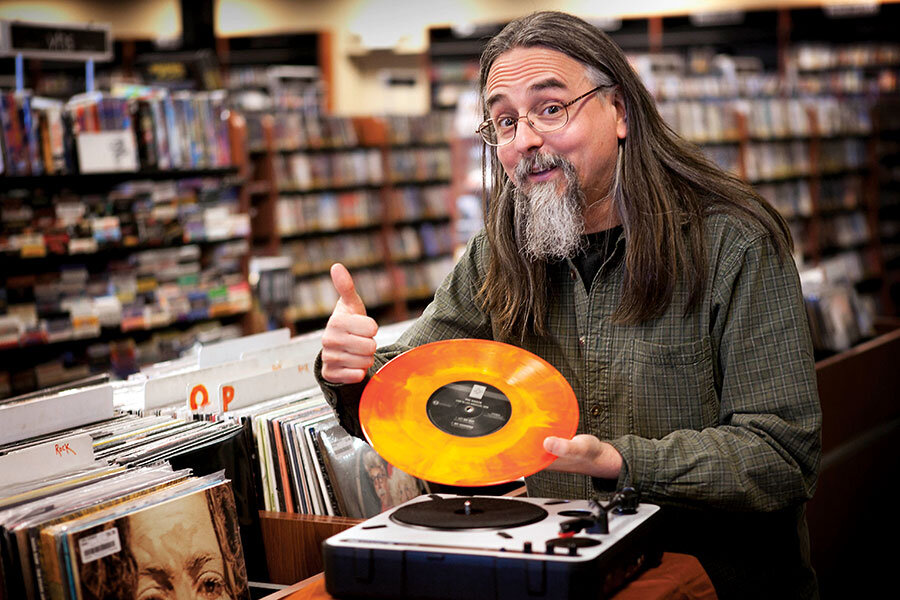Vinyl spins on... and on
Loading...
The imminent demise of the 12-inch vinyl record was thought to be a done deal three decades ago with the arrival of the digital compact disc. But – surprise! – vinyl records have not gone quietly into that good night. In fact, 2014 was the best year for vinyl record sales in the United States since 1996. True, vinyl makes up a tiny percentage of total music sales. But its $9.2 million in US sales last year flies in the face of digital technology, online streaming, and, well, logic.
So what’s driving this trend? Nostalgia is certainly part of it. Those who grew up in the halcyon days of vinyl say they miss the large, colorful sleeves, liner notes, and printed lyrics that came with their favorite records. The social aspect of flipping through and spinning albums with friends is also a big draw.
I was reminded of that pleasure when I stopped by my favorite local indie record shop and started chatting with the sales clerk. College student Anna Buckley was a heavy user of the digital streaming service Spotify until a friend played one of her favorite albums – on vinyl. She was floored. “It was like I’d never heard it before. The sound was so much better – so big and smooth!” she says.
Surprisingly, the bulk of today’s vinyl buyers are not aging baby boomers, but music fans under 30, scouring the remaining indie record stores for vinyl copies of their favorites. Some buy for the warmer, richer sound of the needle in the groove – a technology with a direct line to Edison well over a century ago. But turntable sales are moribund, a clear sign that some vinyl albums are being bought as collectibles or to hang on the wall.
The rise in sales has also bolstered indie record shops. On Record Store Day (April 18) this year, special vinyl releases flew off the shelves. Fresh pressings by The White Stripes, David Bowie, Run the Jewels, and Bob Dylan topped the sales list. Over half a million vinyl records were sold in the US alone on Record Store Day, accounting for 21.5 percent of all physical album sales that day.
The vinyl countdown? Time will tell.





